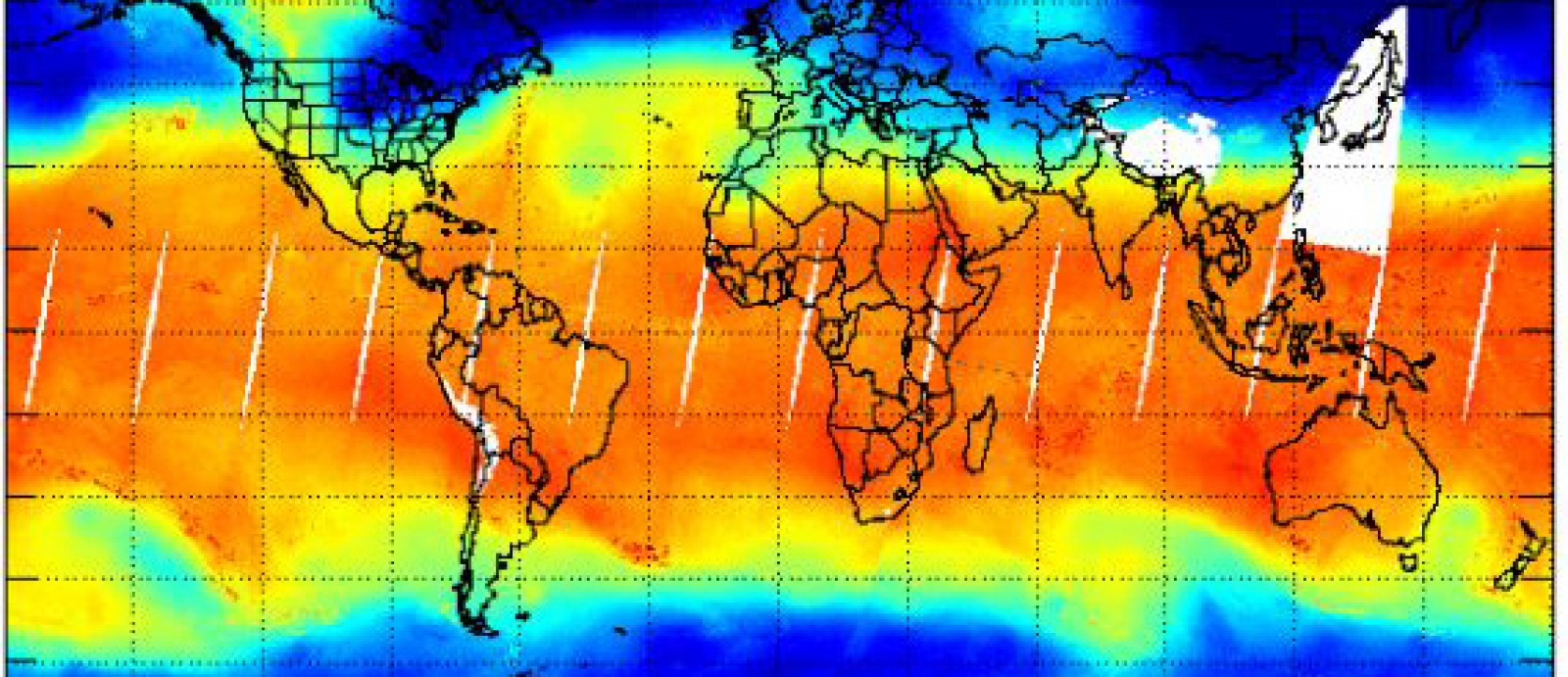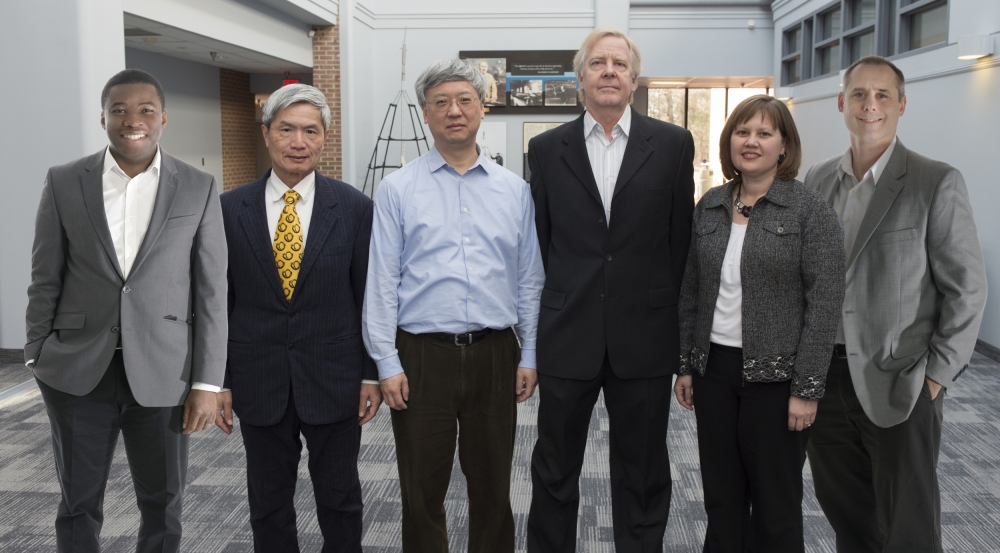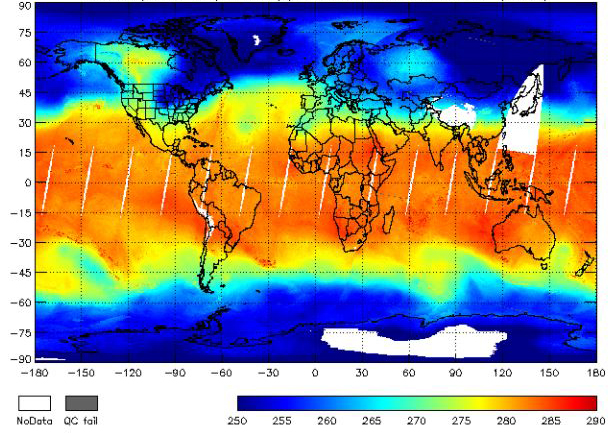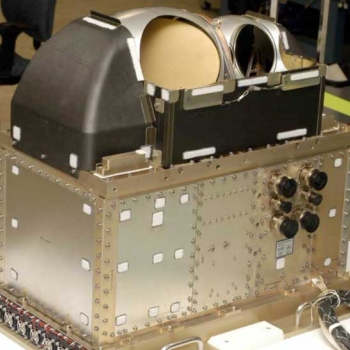
Lincoln Laboratory scientists among recipients of major NASA awards
Whether planning vital storm evacuations or time-critical crop harvests or simply vacation travel, people rely on accurate, timely weather predictions. Researchers R. Vincent Leslie and Idahosa Osaretin from MIT Lincoln Laboratory's Applied Space Systems Group participated on two NASA-led teams whose work on a next-generation microwave sounder may lead to greatly improved forecasting of storm systems. These teams were recognized for this work with NASA Agency Honor Awards, NASA's highest commendations.
The teams enhanced the Advanced Technology Microwave Sounder (ATMS) that now rides aboard NOAA-20, the first satellite launched in the Joint Polar Satellite System (JPSS) series, a constellation of spacecraft that NASA and the National Oceanic and Atmospheric Administration are developing for daily global monitoring of atmospheric conditions. Microwave sounders, which take measurements of atmospheric temperatures and moisture, have historically provided the data that has had the greatest impact on the accuracy of weather forecasts. The ATMS measures microwave radiation from the Earth's atmosphere and surface all day and night, collecting data to provide views inside and below clouds and inside active storms, including hurricanes.
"It was important that our teams deliver a world-class instrument to help improve weather forecasts that depend on highly-sensitive instruments, such as ATMS, to provide the data input to numerical weather prediction models," Osaretin said. "Although the teams had to disassemble the instrument a couple of times to fix a few problems discovered during testing, and despite schedule and cost pressures, we chose to persevere, avoid cutting corners, and work toward delivering a fully functional instrument because the lives and property of many may someday depend on accurate forecasts from ATMS's data," he continued.
The six-member ATMS NASA Science Analysis Team was presented with the 2017 NASA Robert H. Goddard Award for Exceptional Achievement in Science. A team of more than 30 scientists and engineers led by researchers at NASA’s Goddard Space Flight Center (GSFC) earned a 2017 NASA Agency Group Achievement Honor Award.

Both teams were honored for their sustained efforts to troubleshoot operational problems identified in the ATMS and to rework the instrument to resolve the issues. This work spanned more than three years and involved two rounds of modifications to the ATMS, testing to assure that changes operated seamlessly with the other instrumentation, and three recalibrations of the ATMS in a thermal vacuum chamber to ensure the instrument was resilient to environmental conditions in space.
NASA recognized the Science Analysis Team for the "accurate science characterization of the nation's most critical new weather sensor [ATMS]," and the larger team for the extensive engineering effort involved in reworking the sounder.
"It has been great to be appreciated for the late nights and weekends we had to work to make ATMS successful, but also to be recognized by the sponsor for our expertise. We provide most of our work remotely through telecons and presentations, so our contributions could easily be overlooked because we aren't physically in meetings or frequently meeting with them face-to-face," Leslie said.
Leslie explained that he and Osaretin participated on the two teams because they understand both the science and engineering of ATMS. “Some of the areas of expertise we provide to the ATMS team include instrumentation, a deep understanding of error sources, calibration experience, and the ability to model geophysical retrieval techniques used to generate data products for end users. This breadth of knowledge lets us understand how hardware changes impact the final data product," he said.
On November 18, 2017, the NOAA-20 satellite equipped with the revamped ATMS was launched from Vandenberg Air Force Base in California. Data acquired by the JPSS will be used in forecasting severe weather like hurricanes and tornadoes and in assessing environmental hazards such as droughts, forest fires, poor air quality, and threatening coastal waters. The JPSS is planned to deliver global observations of Earth’s atmosphere, oceans, and land through 2038.

